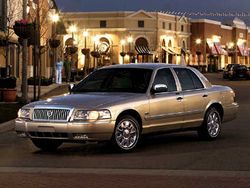.
Full-Size Cars: Difference between revisions
| Line 34: | Line 34: | ||
==Recent full-size cars== | ==Recent full-size cars== | ||
*[[Mercury Montego]] | *[[Mercury Montego]] | ||
*[[Mercury Marauder]] | |||
*[[Ford Five Hundred]] | *[[Ford Five Hundred]] | ||
*[[Buick LeSabre]] | *[[Buick LeSabre]] | ||
*[[Buick Park Avenue]] | *[[Buick Park Avenue]] | ||
*[[Cadillac Deville]] | *[[Cadillac Deville]] | ||
*[[Chrysler 300M]] | *[[Chrysler 300M]] | ||
*[[Chrysler Concorde]] | *[[Chrysler Concorde]] | ||
*[[Chrysler LHS]] | *[[Chrysler LHS]] | ||
*[[Dodge Intrepid]] | *[[Dodge Intrepid]] | ||
*[[Oldsmobile Aurora]] | *[[Oldsmobile Aurora]] | ||
Revision as of 23:38, 11 May 2007

A full-size car is a marketing term used in North America for an automobile larger than a mid-size car. The American EPA uses "large car" to denote full-size cars.
Full-size is defined in measurement as greater than 120ft of interior volume. Previously, a wheelbase greater than (110 inches) was the criterion. The term first appeared in the early 1960's to define what also became known as "standard" size cars from the new compact and intermediate models then being introduced.
Due to the growing length of wheelbases among mid-size luxury sedan, however, the overall length of the vehicles has become another factor to take into account as well. Full-size cars should therefore also feature an overall length of more than 5m (197in).
Current full-size cars
A * denotes a car available with 6-passenger seating
- Audi A8
- Bentley Arnage
- BMW 7 Series
- Buick Lucerne*
- Cadillac DTS*
- Chevrolet Impala*
- Chrysler 300
- Dodge Charger
- Dodge Magnum
- Ford Crown Victoria*
- Ford Taurus
- Infiniti Q45
- Lexus LS
- Lincoln Town Car*
- Maserati Quattroporte
- Mercury Grand Marquis*
- Mercury Sable
- Mercedes-Benz S-Class
- Nissan Maxima
- Toyota Avalon
- Volkswagen Phaeton
- Volvo S80
